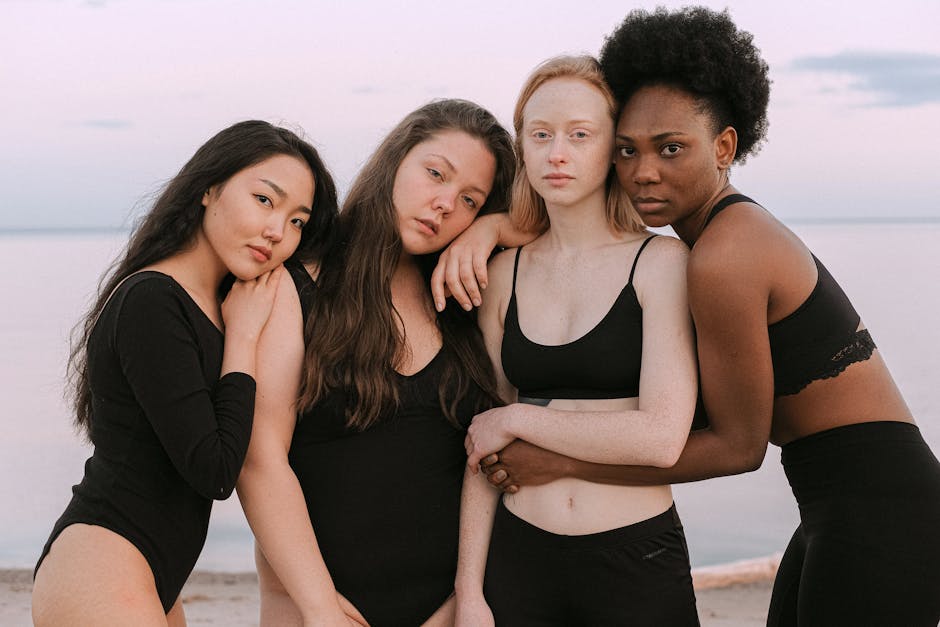Table of Contents
Figuring out how much brisket you actually need for a gathering, whether it’s a big family reunion or just a few friends coming over, can feel a bit like trying to solve a puzzle. You don’t wanna run out, right? That’s, like, the worst-case scenario. But you also don’t wanna end up with a mountain of leftovers that no one wants to eat after day two. So, in 2025, with all the fancy smokers and precise cooking methods out there, getting the right amount of brisket still comes down to a few basic ideas, plus some common sense stuff you pick up along the way.
It’s not just a simple number, like “a pound per person.” If only it were that easy! Brisket shrinks a whole lot when you cook it. We’re talking about losing somewhere between 30% and 50% of its weight, depending on how fatty it is and how long you cook it. That’s a massive difference, and it means you can’t just buy a 10-pound raw brisket and expect 10 pounds of cooked meat. No way.
Why Brisket Shrinks (and Why It Matters)
Alright, so the shrinkage thing is a big deal. When you smoke a brisket for 10, 12, even 16 hours, a bunch of stuff happens. First, water gets cooked out. Brisket has a lot of moisture, and that’s just gonna evaporate. Second, the fat renders down. A lot of that beautiful white fat cap and the intramuscular fat (the marbling) turns into liquid. Some of it bastes the meat, which is awesome, but a lot drips away.
Think about a raw brisket, maybe a whole packer, weighing in at 15 pounds. After all that low-and-slow action, after it’s rested and then you slice it up, you might only have 9 or 10 pounds of actual edible meat. That’s a good chunk gone. So, if you’re planning on serving, say, 10 people, and you figure everyone eats a half-pound of cooked brisket, you’d need 5 pounds of cooked meat. But to get that 5 pounds cooked, you’d probably have to start with at least 8 to 10 pounds raw. See? It gets complicated fast. People often forget this part, then they slice up their perfectly cooked brisket and realize they don’t have as much as they thought. I’ve done it myself, more than once.
Different People, Different Appetites
Here’s another thing to keep in mind: not everyone eats the same amount. You’ve got your big eaters, your polite pickers, and everything in between. If you’ve got a bunch of hungry teenagers or folks who just got back from a long hike, they’re probably going to pile their plates higher than, say, your grandma or someone who’s watching their calories.
Then there’s the type of event. Is this the main event? Is brisket the only thing people are going to eat, or are there a ton of sides, other meats, and desserts? If it’s just brisket, maybe a potato salad, and some beans, people are gonna focus on the meat. If it’s a full-on potluck with three kinds of chili, two chickens, and a dozen casseroles, then folks will probably take a smaller serving of brisket to leave room for everything else. My personal rule of thumb is to err on the side of caution if brisket is the star. Better too much than too little.
Factors to Consider for Your Brisket Quantity
Okay, let’s break down what really makes a difference when you’re trying to pin down that magic number for your brisket purchase.
1. The Crowd You’re Feeding:Adults vs. Kids: Kids usually eat less. Small kids, maybe just a few ounces. Older kids? Treat ’em like adults, especially if they’re active.
Hunger Levels: Are people showing up starving? Or is this part of a long day of snacking?
Event Type: Is it a casual backyard BBQ or a more formal sit-down meal? For a casual one, people might grab seconds more easily.
2. Other Food on the Menu:Lots of Sides? If you’ve got mac and cheese, coleslaw, corn on the cob, rolls, and a couple of desserts, people will fill up on those too.
Other Meats? If you’re also serving ribs, pulled pork, or chicken, then the brisket can be a smaller portion of the overall meal. If it’s the only meat, you need more.
3. Desired Leftovers: This is a big one for me. I actually want leftovers sometimes! Brisket is amazing for sandwiches, tacos, or even just reheating a slice the next day. If you’re like that, plan for extra. If you hate leftovers, then try to hit the mark exactly.
4. The Brisket Itself:Full Packer vs. Flat/Point: A full packer brisket (the whole thing, both the flat and the point muscles) gives you more options. The flat is leaner, good for slicing. The point is fattier, good for burnt ends or shredding. If you just buy a flat, it’ll probably yield a bit less overall because it’s leaner, so less fat to render away.
Fat Content: Some briskets are fattier than others. More fat means more shrinkage.
Trim: How much fat are you trimming off before you cook it? If you trim aggressively, you’re starting with less raw weight, which means less cooked weight.
General guidelines and the Squishy Math
Alright, so with all that in mind, what’s a good starting point?
For a main course, where brisket is pretty much the star, I usually think about how much cooked meat I want. A good serving size for a normal adult is usually around 1/3 to 1/2 pound of cooked brisket. Some folks will eat less, some more, but that’s a decent average.
Let’s go with 0.4 pounds (just under a half-pound) of cooked brisket per person as a reasonable target for an adult at a BBQ.
Now, because of that 30-50% shrinkage, you need to factor that in. Let’s assume, to be safe, a 40% loss from raw to cooked. That means if you want 1 pound of cooked brisket, you actually need to start with 1 / (1 – 0.40) = 1 / 0.60 = approximately 1.67 pounds of raw brisket.
So, if you aim for 0.4 pounds of cooked brisket per person:
You’d need 0.4 lbs 1.67 = roughly 0.67 pounds of raw brisket per person.
Let’s round that up to be safe. So, I generally tell people to budget about 3/4 pound (12 ounces) of raw brisket per person if it’s the main meat and there are sides. If you want more leftovers or you have a particularly hungry crowd, go for 1 pound of raw brisket per person.
If there are other meats (like ribs or chicken), you can drop that a bit, maybe down to 1/2 pound (8 ounces) of raw brisket per person. But frankly, if you’re putting in all that effort for a brisket, why skimp? Most people will want a good serving.
Example Scenario:
You’re planning a backyard get-together for 15 adults. Brisket is the main event, with a few decent sides.
Target: 0.67 to 1 pound raw per person. Let’s aim for 0.75 pounds raw per person for a comfortable amount.
15 people 0.75 pounds/person = 11.25 pounds of raw brisket.
So, a 12-13 pound full packer brisket should do the trick. If you want leftovers, grab a 15-pounder.
What’s interesting is how many people underestimate this. They see a 10-pound raw brisket and think “Oh, that’s tons!” only to realize after trimming and cooking, it’s more like 6-7 pounds of actual meat. That’s why that raw-to-cooked conversion is so crucial.
Don’t Forget the Rest and Slice
After all that cooking, you absolutely, positively have to let that brisket rest. Like, for a long time. An hour at room temp, or wrapped up in a cooler for 3-4 hours. This lets the juices redistribute and makes the meat so much more tender. If you slice it too early, those juices just run all over your cutting board, and your brisket dries out. No one wants dry brisket after all that work.
Then, slicing. Cut against the grain, always. For a full packer, the grain usually runs in two different directions, so you might need to separate the flat and the point to slice each properly. Thin slices, like pencil-thin, are generally best for the flat. The point can be cubed for burnt ends, or sliced thicker. How you slice it can also affect how much people think they’re eating. Thinner slices mean more surface area and can make a serving look bigger.
Making the Call: Brisket for the Win
Ultimately, choosing how much brisket to cook is more of an art than a science. You’re trying to predict human appetites, which, let’s be honest, are notoriously unpredictable. But with these general guidelines – remembering that massive shrinkage, thinking about your crowd, and considering the other food – you can get pretty darn close. And, in my experience, if you do end up with a little too much, well, cold brisket sandwiches the next day are a pretty sweet deal. Better to have too much than hear someone ask if there’s any more because they only got a tiny piece. That’s just sad.
The biggest mistake folks make is just grabbing a brisket based on how many people they think they’re feeding without accounting for that huge weight loss during cooking. Really, that’s the number one thing to remember. So, for your 2025 BBQ, get a slightly bigger brisket than your gut instinct tells you. You won’t regret it.
FAQs: How Much Brisket Per Person?
Q1: How much raw brisket should I buy per person for a main meal?
A1: For a main meal where brisket is the star, plan on buying about 0.75 to 1 pound (12-16 ounces) of raw, untrimmed brisket per adult. This accounts for the significant weight loss during cooking.
Q2: If I’m also serving other meats, how much raw brisket do I need?
A2: If you have other main dishes like ribs or chicken, you can reduce the raw brisket amount to about 0.5 pounds (8 ounces) per person. People will typically try a bit of everything.
Q3: How much does brisket shrink when cooked?
A3: Brisket typically shrinks by 30% to 50% of its original raw weight after cooking, resting, and trimming. This is due to moisture loss and fat rendering. I usually budget for about 40% loss to be safe.
Q4: Is it better to have too much or too little brisket?
A4: It’s definitely better to have too much. Leftover brisket is fantastic for sandwiches, tacos, chili, or just reheating. Running out is a major disappointment for guests, especially if they came for your famous smoked brisket.
Q5: Does the type of brisket (flat vs. packer) change how much I should buy?
A5: Yes, a little. A full packer brisket includes both the leaner flat and the fattier point. If you only buy a flat, it’s leaner and might yield slightly less cooked meat percentage-wise, but you’re also starting with a smaller, more uniform cut. Generally, sticking to the raw weight per person guideline (0.75-1 lb) works for both, just make sure you know what cut you’re getting.












